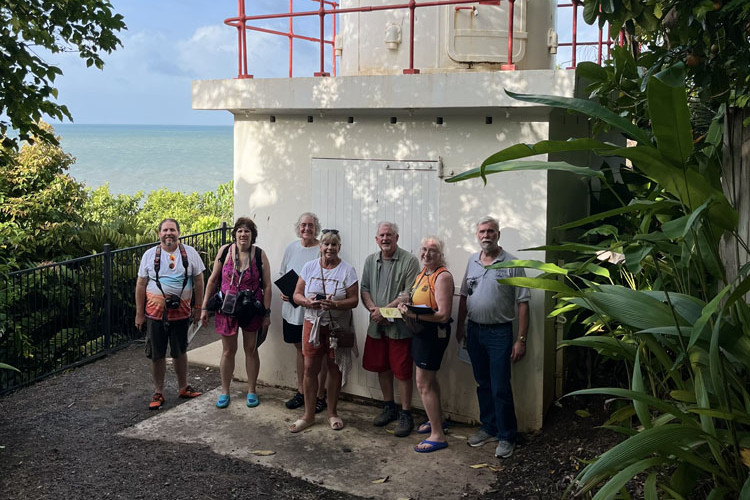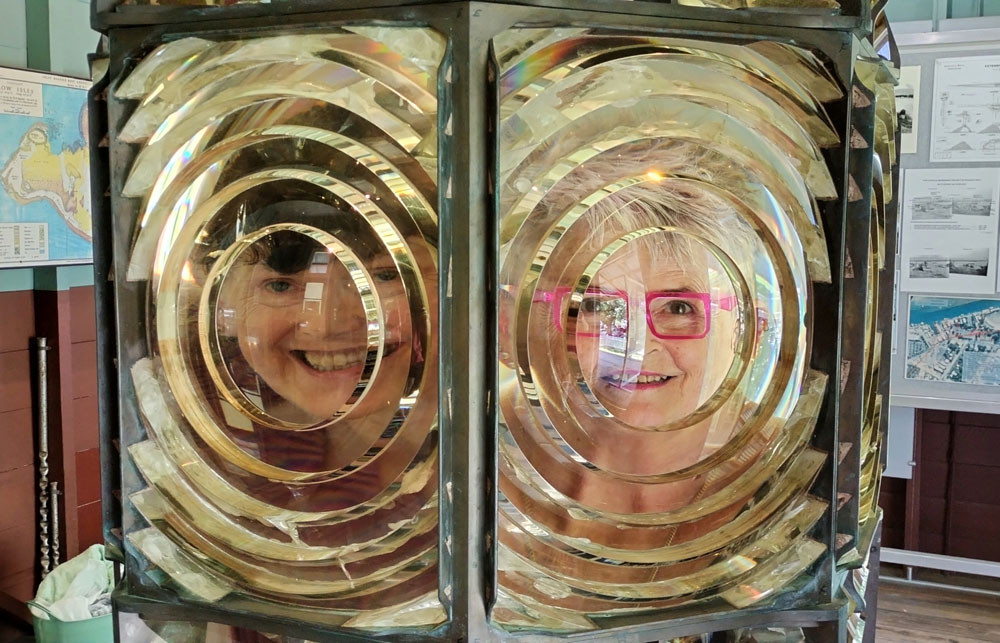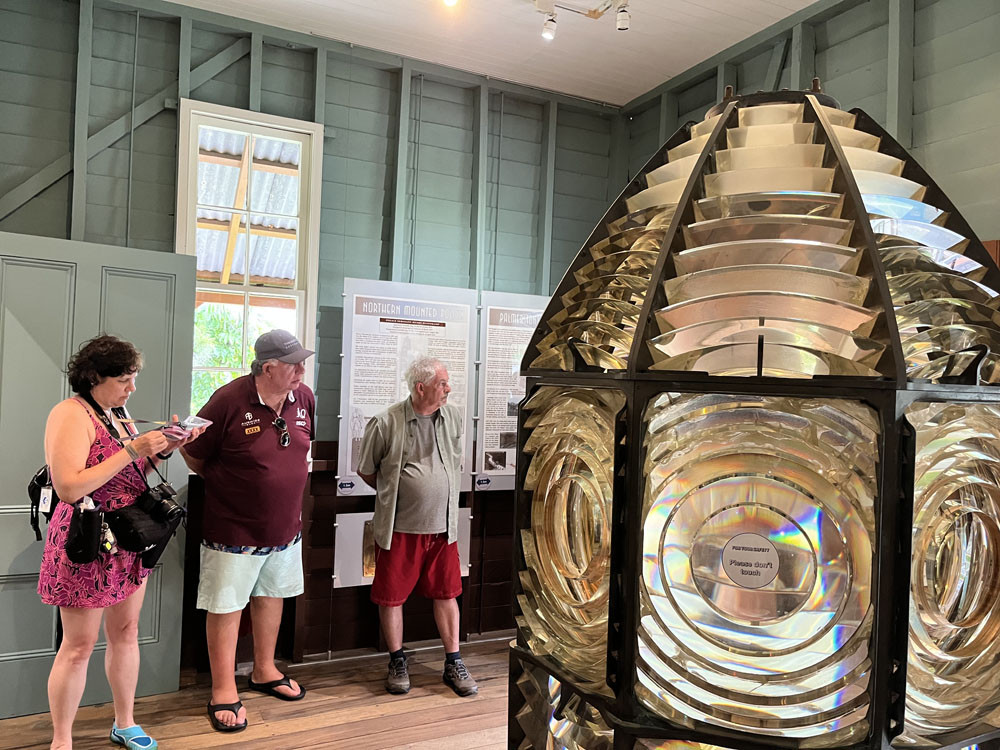Community
30 April, 2025
US travellers see the light
THE Douglas Shire Historical Society has welcomed 18 members of the United States Lighthouse Society during their tour of northern Australian lighthouses.

The main attraction of their visit was to view the Chance No.3 Fresnel (pronounced freh-nell) lens, manufactured in Birmingham in 1877 and installed in the new Low Isles lighthouse on the island in 1878.
The lens is now on display at the Port Douglas Court House Museum.
Apart from enjoying time in the Douglas Shire, the visitors were able to share research information about the Chance Brothers Third Order Fresnel lens which occupies a special place at the museum.
The lens was removed from the Low Isles lighthouse in 1993 when the system was converted to automated solar electric power and placed in the museum the same year.
At the museum, the historic lens has bedazzled thousands of visitors annually, especially as the morning sun filters beneath the veranda and fills the room with rainbows of light.
Going further back in history, a mass migration of people from around the world rushed to Far North Queensland when gold and many other precious metals were discovered in the coastal range and beyond, which can be viewed to the west of Low Isles. Gold was discovered on the Palmer River, inland from Port Douglas in 1873, which ushered in the white colonisation of Far North Queensland.

With the continued demand for shipping services as a result of new mines and the emerging port towns of Port Douglas and Cairns, a need for safe navigation for shipping emerged.
Largely, due to the immense Great Barrier Reef, more than 1800 ships have been wrecked along the 6000km of Queensland’s coastline, including immigration passenger ships, relatively close to shore.
In 1878, the Low Isles (or Islets) light station was constructed and became the first in the north of Queensland. Its location inside the Great Barrier Reef represented the first attempt to address the dangers to ships approaching newly established ports from the north.
The original compound consisted of the light tower, three cottages for the keeper and his assistants, a store and a boat house.
Located on the western edge of the main shipping channel, the new Low Isles lighthouse featured a timber staircase to give access to the lantern room and the tower was painted white with a red dome, featuring a weather vane. The internal staircase surrounded the central weight tube and the balcony, around the lantern room, was a radial cantilevered timber section, encompassed by an iron balustrade.

The construction involved the towers hardwood frame being clad with riveted wrought iron sheets to form a tapered conical tower. It was originally planned with rectangular windows but built with round bronze framed porthole windows, an innovation that was applied to later towers.
The lantern room featured flat trapezoidal windows and a ball vent on top of the roof. The original third order Fresnel lens, made by Chance Bros. consisted of a rotating assembly of glass lenses and prisms that revolved using a clockwork mechanism around an oil, later modified to kerosine lamp at its centre.
The original oil burners were converted to vapourised kerosene in 1923, the illuminant and the lights intensity increased from 13,000 to 100,000 candelas. It was altered again in 1930 and the light was again upgraded in 1963 to electric operation.
I’m off to shed some light on another interesting story, so for now it’s Gazza signing out.
Send your stories to gazza@cairnslocalnews.com.au


